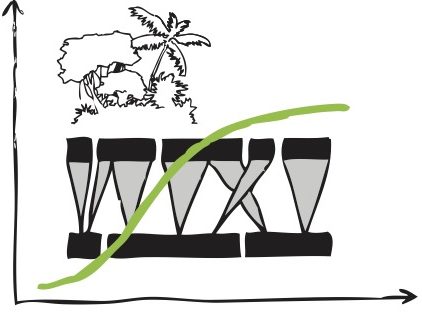I have always been deeply interested in exploring and understanding tropical ecology and biodiversity. My work has afforded me the privilege of conducting research across Ecuador’s four major regions: the Amazon, Highlands, Coast, and the Insular region (Galápagos). This exposure has provided valuable insights into the profound impacts of anthropogenic activities on biodiversity and underscored the vast knowledge gaps that remain—particularly regarding the ecological networks that govern forest dynamics and could inform restoration strategies. Currently, as part of my Ph.D. research within the Reassembly project, my research delves into the interactions among saproxylic insects (beetles), fungi, and deadwood, focusing on their roles in decomposition processes and the broader implications for nutrient cycling and forest ecosystem dynamics.
Deadwood is a critical resource for global forest biodiversity, providing habitat for a wide range of interacting invertebrates and fungi. While many species benefit opportunistically from deadwood, approximately one-third of all forest insect species are saproxylic, relying exclusively on it during some part of their life cycle. Unfortunately, many of these species are now at risk in intensively managed landscapes. Over the past decades, numerous studies have focused on conserving this fauna, particularly examining the impacts of forest management practices and natural disturbances. However, significant knowledge gaps persist, especially concerning subtropical and tropical forests, where further research is urgently needed.
To address this gap, my first subproject involves surveying naturally occurring deadwood along a forest recovery gradient in the Chocó rainforest. Given that deadwood serves as a habitat for many specialized species, I am also investigating which insect species inhabit these natural deadwood structures, focusing particularly on patterns of species co-occurrence, competitive exclusion, and potential priority effects. Also, in another experiment I exposed wood logs from five different tree species on each plot (62 plots) and analyzed the beetle and fungi communities that colonized the deadwood. The resulting interaction network gives important insight in which insect and fungus species are most important in colonizing and decomposing deadwood in the different recovery stages.
Finally, in my last experiment, I want to measure the contribution of beetles and fungi to deadwood decomposition. I performed an insect exclusion experiment on the 32 PREX plots (PREX treatments with soil disturbance and large mammal excluding fences) and I will measure the contribution of the single taxa depending on forest age, disturbance, and the exclusion of large mammals.
With these experiments, I want to shed light on the relationships between species identities, functional traits, and contribution to deadwood decomposition of saproxylic insects and fungi in the different forest regeneration stages.


